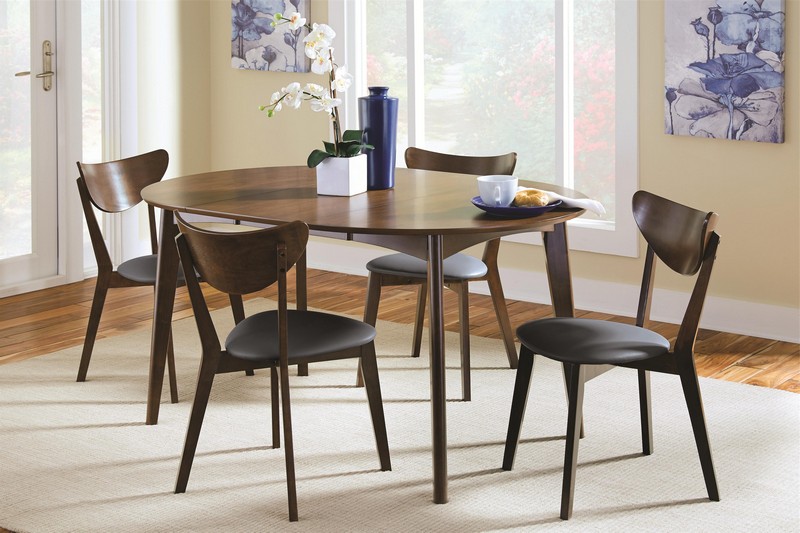The mid century dining table has been a lot of homeowners’ darling because of its versatility. With its simple design and symmetrical style, this dining table delivers a modern charm to any dining space. If you’re thinking of taking advantage of this table style, you shouldn’t miss this following information!
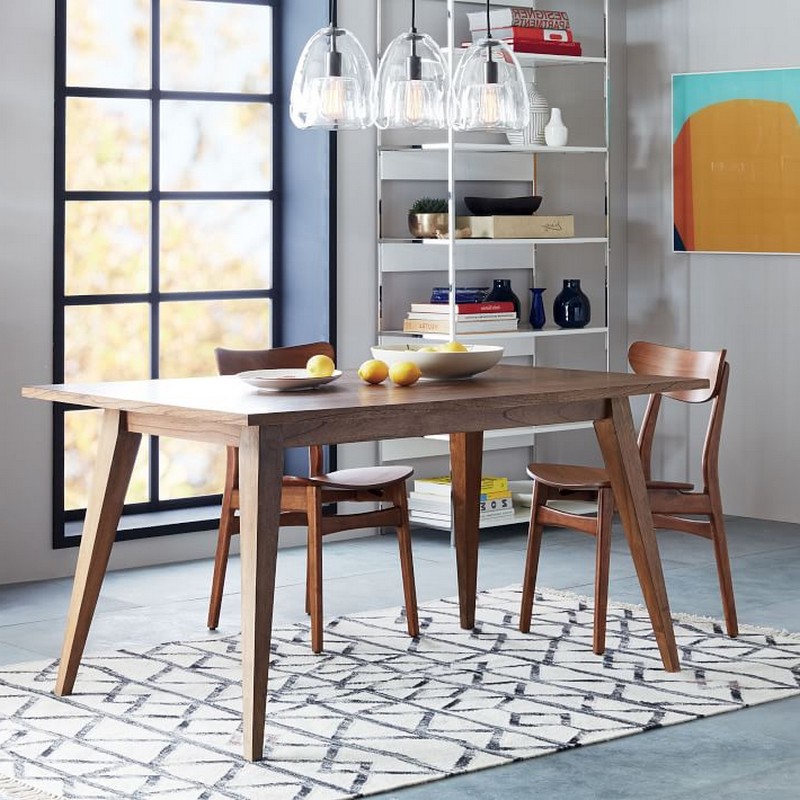
Whether you want to design your dining room into a mid-century style or not, a dining table with mid-century charm can be a good choice. Its versatility makes it possible for you to complement any room without too much fuss. More interestingly, you can also pair it easily with any type of chairs out there.

If you want to bring this style of dining table into your space but don’t know where to start, don’t panic! Here, we’re going to tell you some of the best mid century dining table ideas and tips. Without further ado, let’s check this out!
Top Mid Century Dining Table Ideas You’ll Love
Let’s begin with some mid-century dining table ideas that you can incorporate to your space! It’s no secret that you’ll find a lot of dining table in mid-century design and style out there. With a huge number of choices available, you may find it difficult to choose the right one.
Luckily, you’ve come to the right place to get several top ideas for the best dining table that boasts a mid-century style. From the round one to the rectangular one, you can actually go with one of your likings. But, if you’re still wondering which one to take, here we go!
1. Rectangular Dining Table with Glass Tabletop
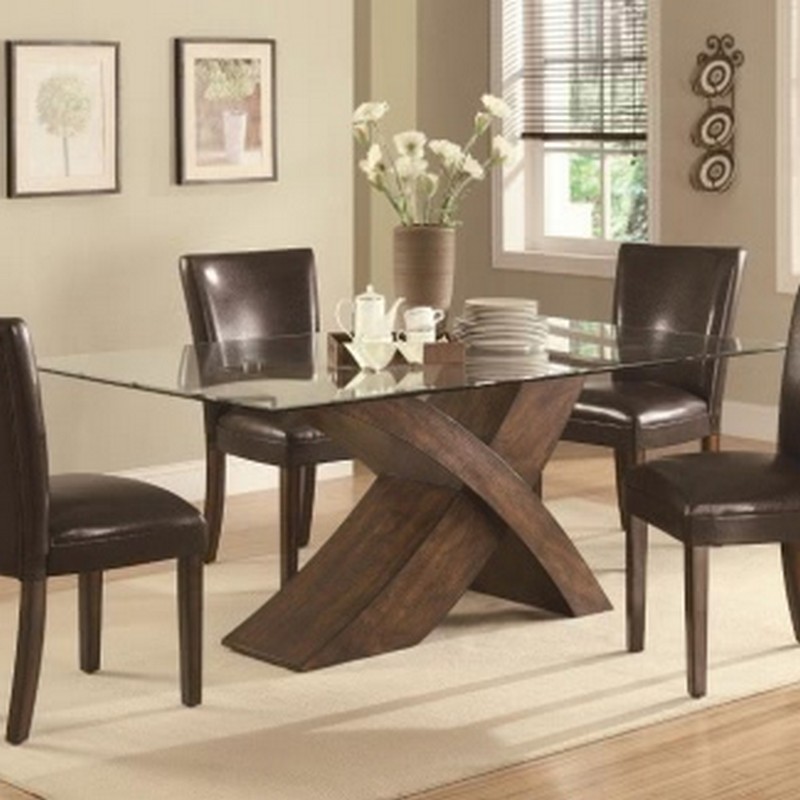
Bring mid-century style to your dining room with a rectangular dining table with clear glass tabletop! This kind of table is perfect if you want to add mid-century charm in your modern home. You can pair it with side dining chairs in the matching color.
2. Round Dining Table with Angular Legs

A round mid century dining table with angular legs and glass tabletop will make a great option for any space. It will be able to deliver calming, balanced aesthetic inside your dining room. With a round design, it will be perfect for a narrow space as well where you want to avoid pointed corner.
3. Artificial Marble Oval-Shaped Dining Table
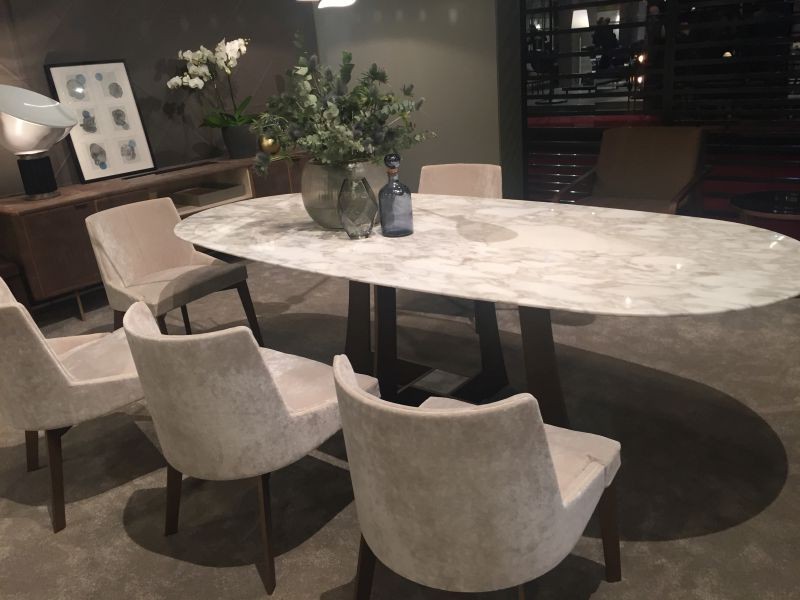
This is another great choice if you don’t want to bring that pointed sharp in your small dining room. With its oval-shaped artificial marble tabletop and pedestal-style base, this dining table will be able to become the center of attention in your space and a hint of mid-century charm.
How to Choose the Right Mid-Century Dining Table
Then, is there any factor that we need to take into account when choosing a dining table with mid-century style? When you want to get the most of the mid-century charm in your dining room, it’s inevitable that you’ll need to know some essential points to choose the right mid century dining table.
1. Geometric forms
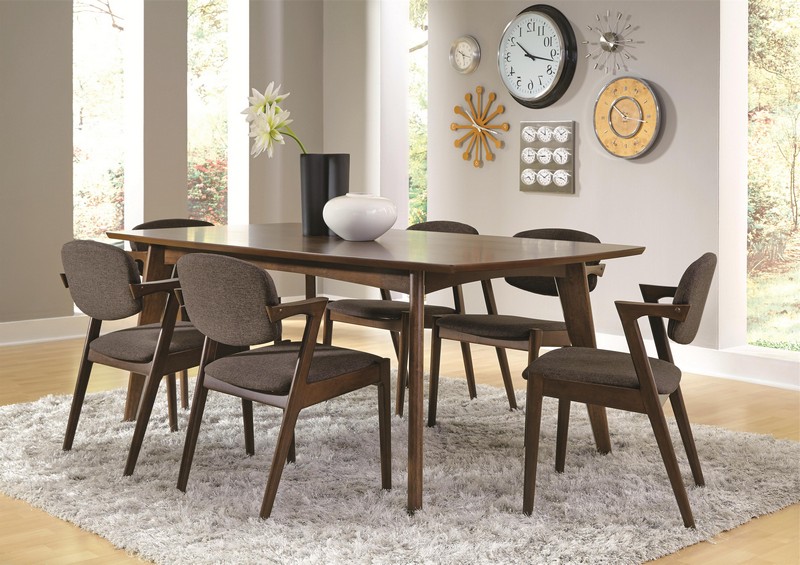
Geometric shapes are popular in mid-century design. That’s why when you’re planning to bring new furniture into a mid-century design, it must rely heavily on linear geometric outlines. For example, you can blend a rectangular dining table with round upholstered chairs for a hint of mid-century appeal.
2. Blend materials
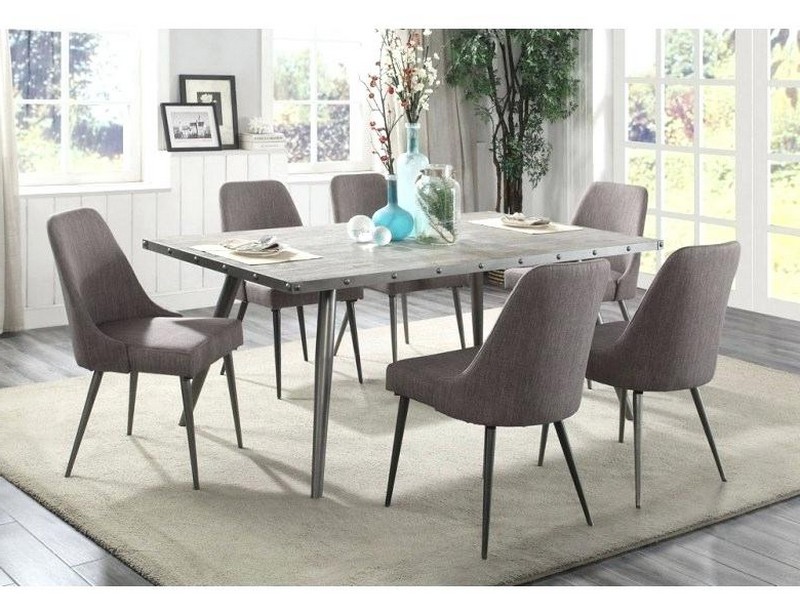
Mid-century designers typically move away from traditional materials; however, they don’t completely reject it. They tend to blend natural materials like wood with other organic elements like glass, metal, and plastic. That’s why when you choose a dining table in mid-century style, go for the one that is designed with more than one material.
3. Earthy and rich colors
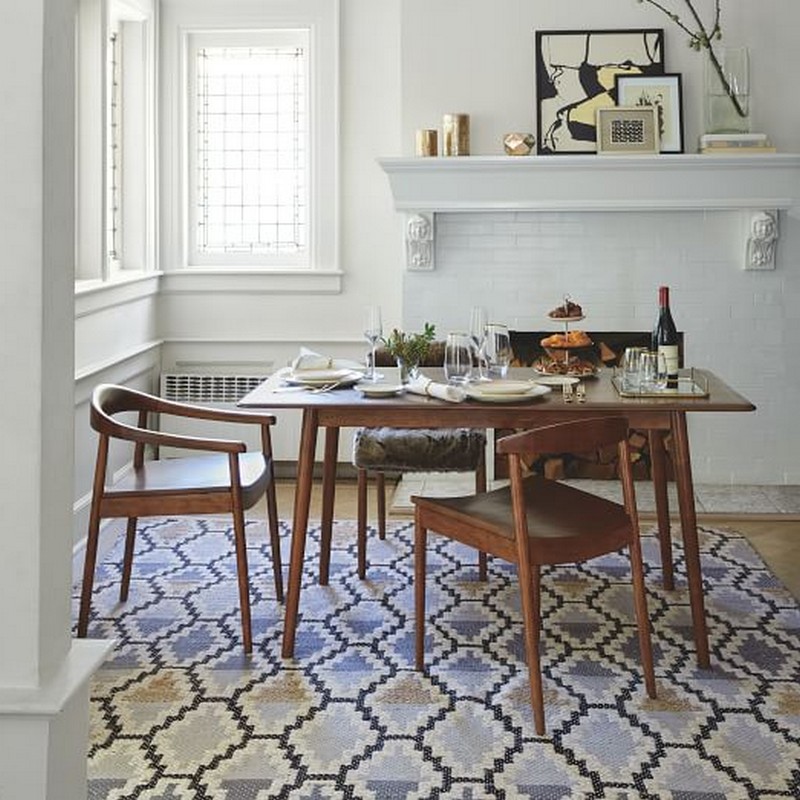
This is another essential point to get the right mid century dining table. The main idea of mid-century style is to use warm earthy tones. That’s why it will be a good idea to choose a dining table that comes in earthy color and then pair it with warm colored chairs.
Those are several points that you need to take into account when choosing a dining table with mid-century style. To make the most of your dining table, you should remember to pair it with the right chairs as well. For instance, you can opt for chairs that blend metal and wood materials.
Tips to Decorate Mid-Century Dining Room
Next, our discussion won’t be complete without talking about some tips to decorate the dining room as a whole. We cannot deny that a dining table will always be a great focal point to any dining room. However, it doesn’t mean that you can overlook the other elements.
Remember that your perfect mid century dining table won’t appear that good without the right elements surrounding it. That’s why it’s important for you to know what to do with the rest. To help you, we’ve put together a few tips that you can follow to decorate your dining room.
1. Opt for an exceptional chandelier
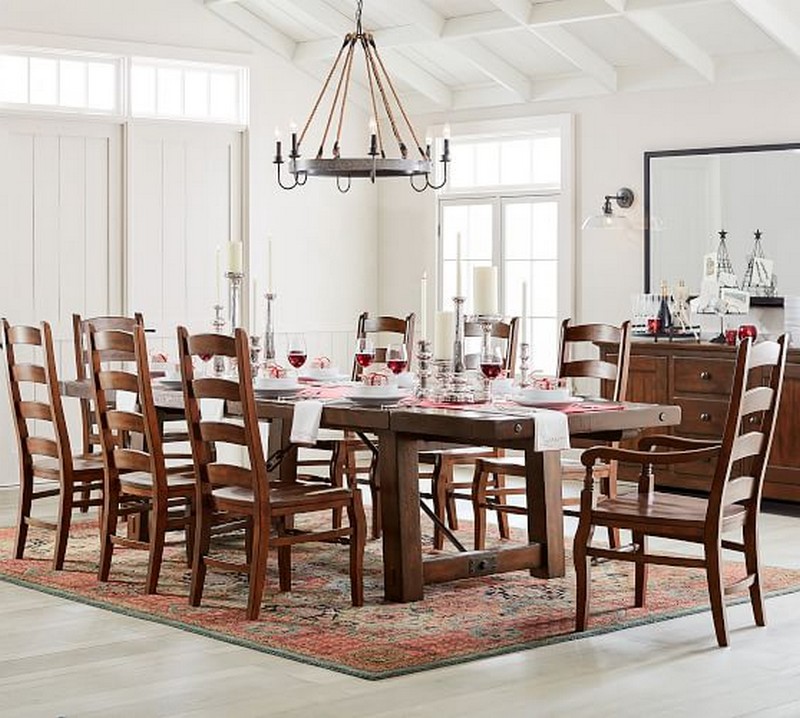
When decorating a mid-century dining room, you’ll need to install the right lighting. Along with the dining table, your light fixture can be a focal point in your space. Consider hanging an exceptional chandelier over your dining table to create a gorgeous dining area inside your home.
2. Bring colorful accessories
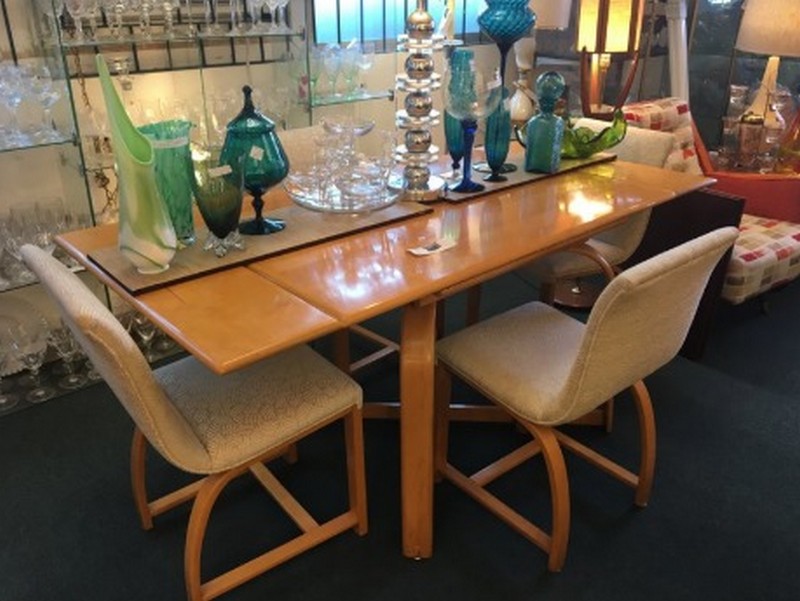
We cannot deny that a mid-century style is all about simplicity. The décor and accessories are meant to be simple to fill out your space without making it look too busy. Selecting accessories in similar shapes but in dissimilar colors can keep your dining room feels livelier without messing the mid-century style.
3. Add whimsical graphic art
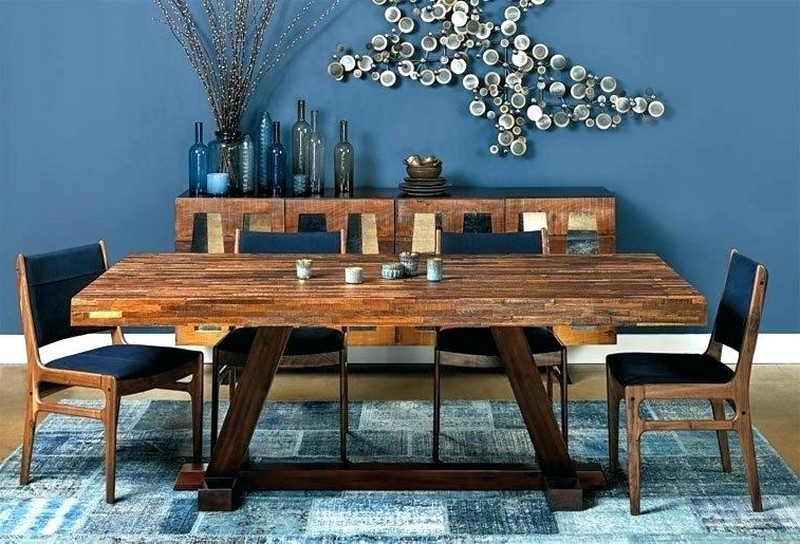
You may think of putting some flower vases on your mid century dining table to add a splash of colors. However, you can also do so by bringing in whimsical and bold graphic art. This idea will be even more perfect if you go for mid-century modern dining room.
In conclusion, there are a number of mid-century style dining tables available in the market. To choose the right one, you need to stick to the main idea of mid-century design such as simplicity, earthy colors, and blended materials. Finally, we hope you can get inspired from these mid century dining table ideas and tips!
Mid-century modernist dining tables emerged between the 1930s and the 1970s, a period characterized by post-Second World War resurgence. This era witnessed the creation of dining tables that exuded timelessness, iconic appeal, functionality, and classic design. Spanning across regions such as Scandinavia, Italy, France, Great Britain, the Netherlands, Germany, Eastern Europe, and the United States, mid-century furniture bore the influential hallmarks of the Bauhaus movement. The designers of this era prioritized the development of a simple and elegant aesthetic that reflected the demands of everyday life in the 20th century. Notably, Scandinavian countries, including Denmark, Sweden, Finland, and Norway, distinguished themselves for their mastery in crafting exquisite furniture utilizing traditional techniques and premium woods such as rosewood, teak, and walnut. Today, vintage mid-century furniture continues to enjoy a resurgence in popularity, becoming an increasingly coveted trend.
Mid-century modern furniture is the latest craze, characterized by its organic flowing curves and minimalist geometric shapes. This design trend remains hugely popular among interior design enthusiasts due to its timeless appeal and functionality. Embracing the “form follows function” principle, mid-century modern design avoids excessive ornamentation to create clean, sleek lines. Even today, this style continues to be a preferred choice for furniture, inspiring contemporary interiors.
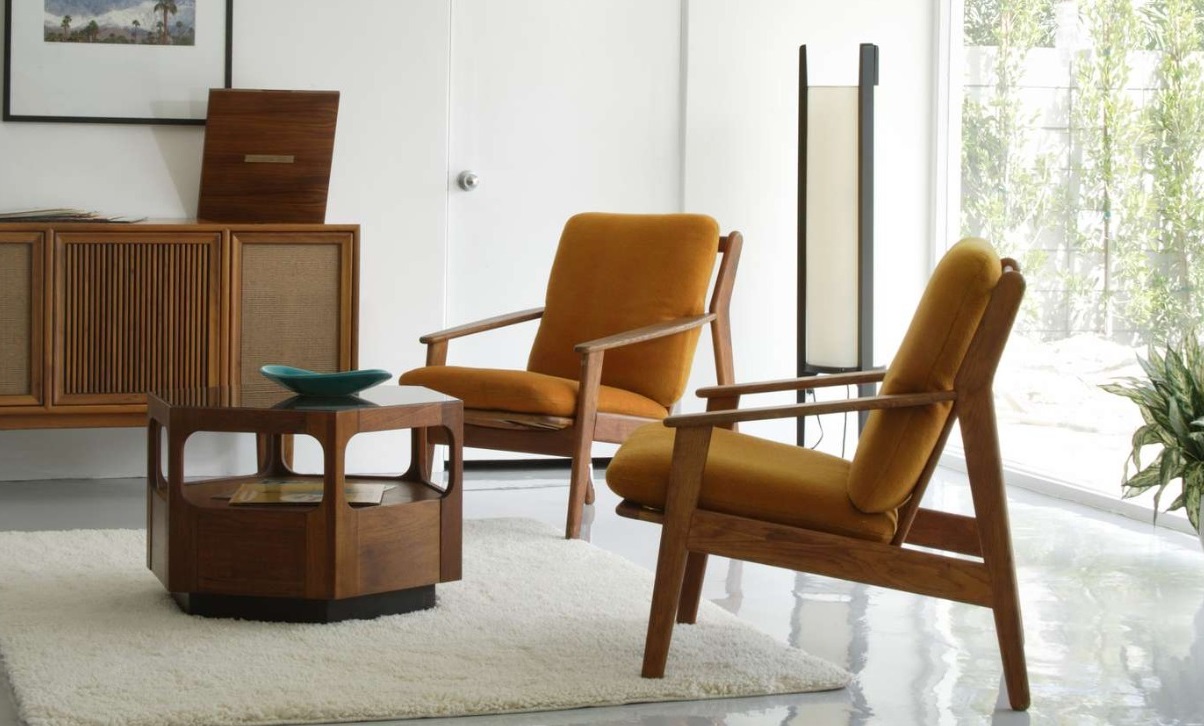
The mid-century style originated in the post-war era, driven by the need for new furniture as countries like the USA, Scandinavia, Italy, and Germany sought to furnish post-war housing. Material shortages led to innovative use of wood, including laminated wood, while plastic also found increased use in furniture design. The “mid-century” style gradually evolved through the 1940s, 50s, and 60s. Cara Greenberg documented this almost forgotten lifestyle in her 1983 book, bringing renewed attention to this influential design movement.
The mid-century style showcases a timeless design inspired by the prosperity of the post-war era. It incorporates the iconic forms and patterns of the much-loved Art Deco aesthetic, epitomizing the exuberance of the 1950s and 60s – a time marked by lively cocktail parties and celebration. This style exudes opulence and sophistication through its use of high-quality materials and exceptional craftsmanship, making it an enduring choice that can be cherished and passed down through generations. Far from being a passing trend, the mid-century look represents a timeless and enduring interior design style.
Characteristics of Mid-Century Modern
Mid-century furniture is known for its distinctive slim legs and graceful, organic design aesthetic. The minimalist appearance of this style emphasizes practicality, echoing the principles of Scandi Chic. Moreover, the boxy furniture with sleek legs evokes the clean lines and functionality of Nordic design. Mid-century modern is thought to combine aspects of the Scandi look with a hint of luxury, effortlessly blending comfort and opulence.
Materials
The mid-century style is characterized by the use of luxurious natural materials such as marble and wood, often paired with glossy surfaces like brass and chrome. Additionally, high-quality upholstery is commonly incorporated, and velvet is a particularly popular choice for sofas and armchairs due to its comfort and durability. Textured fabrics such as corduroy, coarse linen, and wool are also frequently seen in mid-century style interiors.
Tip: To create a balanced effect and add dynamism to the space, consider mixing glass accents with darker colors.
Colors
The mid-century style draws inspiration from the Bauhaus design and embraces the aesthetics of the 1950s. To give it a contemporary feel, you can incorporate a refreshing color palette including shades like antique green, navy, deep pink, purple, and mint. In addition, the use of dark woods alongside lighter, earthy materials is characteristic of this style. Combine muted colors such as brown, cream, or earthy tones with bold pops of orange, rust red, or azure blue to add a vibrant touch. These lively hues can be introduced through elements like pillows, armchairs, or sofas to create striking focal points in your interior.
Mid-century modern design also embraces the use of patterns, whether through wallpaper or textiles. These patterns can be diverse and vibrant, providing ample opportunities for creative mixing and matching.
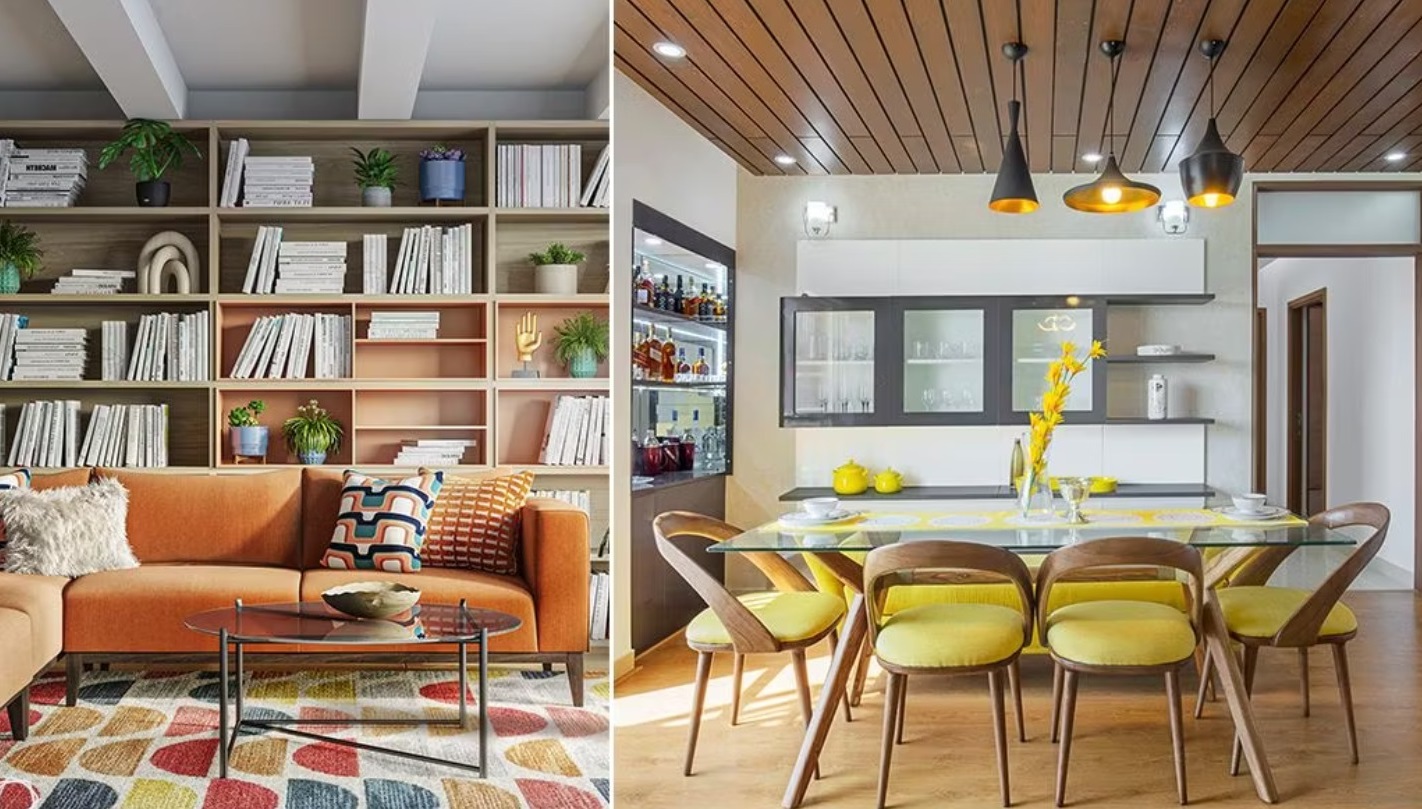
Mid-Century Interior Design Inspiration
If you have a passion for interior design and a keen interest in incorporating trendy mid-century furniture and home accessories, then you’ll love these retro looks for your living room and hallway.
Living Room:
To infuse a modern twist into the mid-century aesthetic and avoid it feeling outdated, focus on selecting one or two substantial furniture pieces for the living room. These pieces can serve as the focal point of the space, such as a luxurious velvet sofa or a sleek chrome side table. A striking dark wood sideboard could also command attention. Skillfully complete the retro style in your living room by using home accessories and small objects that reflect the mid-century style. For a stylish look, consider incorporating a mix of anthracite, navy blue, sage green, or rose accents.
In the mid-century bedroom, a standout piece is the velvet bench complementing the modern bedside tables and black metal lamps. Velvet, pastel colors, and floral details on the bed linen fit perfectly within this setting.
A must-have for a 50s-style interior is dark wood chests of drawers with ample legroom, perfect for the entrance area, providing convenient storage while adding to the overall look. An oversized wall mirror combined with the dark wood chests of drawers can create an unusual and glamorous look in the mid-century modern style. Adding decorative glass elements such as vases or lamps skillfully balances the darker colors and brings in lightness. Another chic addition could be the velvet bench.
The highly sought-after classic designs of the 50s and 60s are essential for a mid-century look and impress with their timeless design. For example, the lounge chair from 1956 by Eames is a famous mid-century furniture piece. Expressive lamps like the “Grasshopper” by Greta Grossmann or the UFO-like pendant lamp “PH 5” by designer Poul Henningsen are also beautiful and commonly used for mid-century modern furniture today. There are many brands and manufacturers offering furniture and lighting with designs reminiscent of the past, which are equally beautiful and often budget-friendly. Long teak sideboards and stylish pendant lamps such as the ball pendant lamp or the Sputnik pendant lamp are also must-haves, and old antiques from antique dealers can be used to add nice accents.
Enhance the glamour of your mid-century interior with vases, candlesticks, and decorative figures featuring gold and brass elements. Complement the retro vibe with sun mirrors, bar carts, and newspaper racks made of thin rods. Complete the look with rugs and cushions showcasing chic vintage graphic patterns. Add a touch of elegance with a rocking chair featuring a gold runner. This combination of elements will infuse your space with a stylish, retro appeal.
Walter Gropius, a pivotal figure in the development of the Bauhaus, established the art school and movement in Weimar in 1919. He served as its director until 1928, aiming to unite art, architecture, and craftsmanship through teaching, practice, and research. Ludwig Mies van der Rohe, another prominent figure associated with the Bauhaus, has left a lasting legacy through his iconic Bauhaus-style houses and bungalows.
The Bauhaus design embodies the principle of “form follows function,” prioritizing simple and symmetrical forms, innovative materials, and artistic craftsmanship. Bauhaus furniture and architecture radiate elegance and practicality, characterized by minimalist, clear architecture, straight lines and shapes, simple colors, and a flexible, precise installation style. The iconic houses in Dessau exemplify this design approach, featuring flat roofs, ribbon windows, right angles, box architecture, and an overall clean, white aesthetic.
To achieve the iconic Bauhaus interior design for your home, it’s crucial to familiarize yourself with the timeless pieces from the Bauhaus collection. Our team of interior design experts is here to assist you in creating an authentic Bauhaus-style ambiance for your living space!
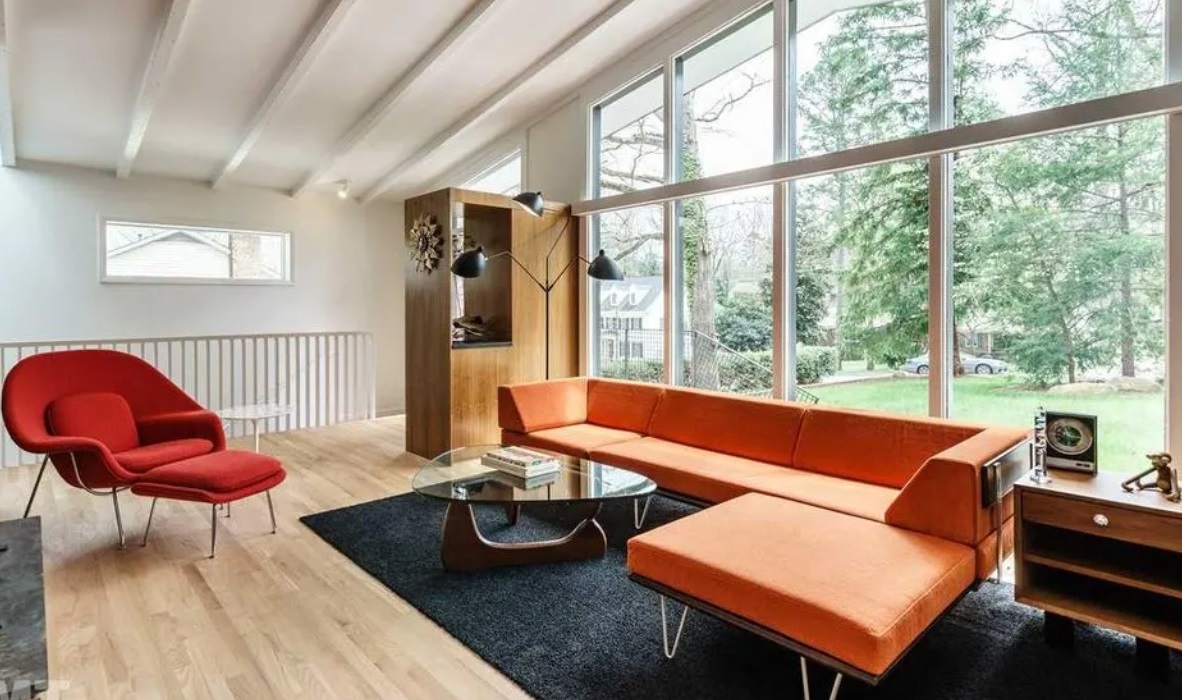
Bauhaus style is characterized by its use of primary colors and geometric shapes, as well as its emphasis on practicality and functionality. The famous color wheel, developed by Johannes Itten, a prominent figure at the Bauhaus school, highlights a limited color palette. Red, yellow, blue, as well as black and white are commonly featured in Bauhaus artwork.
The Bauhaus style is characterized by a holistic approach to color coordination within a space, moving beyond mere decorative objects. Rather than simply painting walls in primary colors, consider using stencils to create basic geometric shapes like triangles, circles, or squares. Alternatively, you could opt for vibrant Bauhaus-inspired wallpapers. Contrary to common assumptions, warm textiles and wool can also be integrated to foster a welcoming and snug ambiance in a Bauhaus-style home.
In Bauhaus decor, the principle of “Less is more” prevails, emphasizing a minimalist approach. The overall cool aesthetic of Bauhaus design allows for the use of colors and geometric patterns on items such as cushions and blankets. A geometric or cowhide rug is essential to enhance the Bauhaus look.
The 1970s are making a resurgence in fashion and interior design! This iconic era is defined by its embrace of flower power, animal prints, and a variety of materials including corduroy, velvet, suede, and of course, the music of ABBA. The vibrant colors and retro charm of 70s style continue to be a popular trend in interior design. By incorporating 70s furniture, lighting, decor, and textiles, you can infuse your living space with bold colors and lively patterns.
In the realm of furniture, 70s style was characterized by vibrant colors and daring patterns. Eye-catching wallpapers featuring bright colors and psychedelic designs were especially in vogue, extending even to the decoration of bathrooms with flower stickers and other bold motifs.
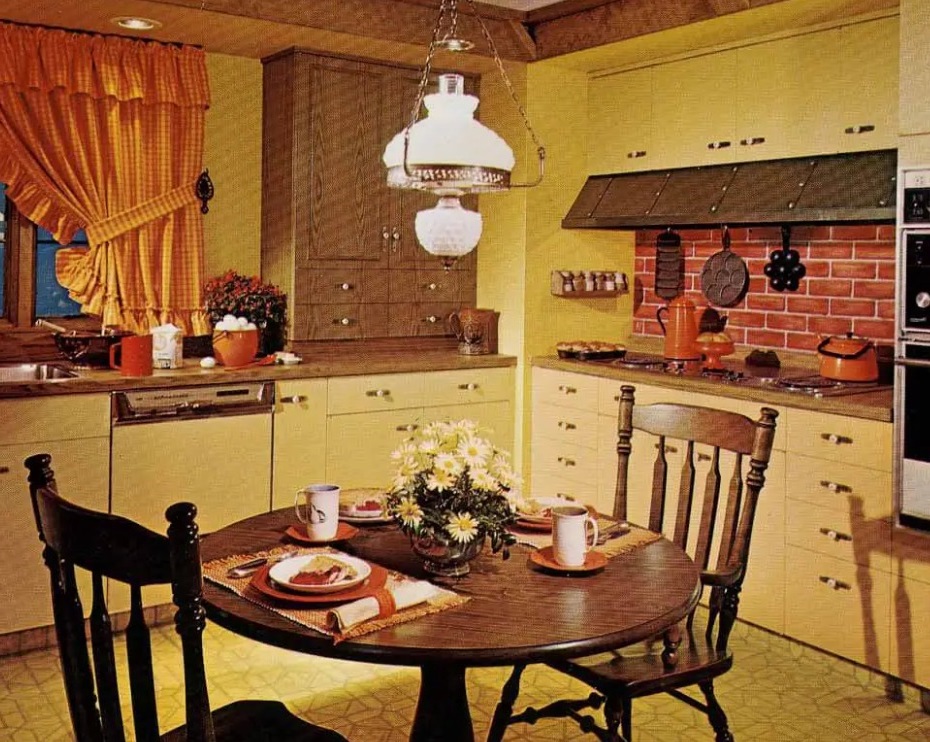
During the vibrant 1970s, interior design reflected the era’s colorful spirit. Futuristic furniture and lamps were iconic elements of the 70s aesthetic, possibly influenced by landmark events such as the moon landing.
For contemporary enthusiasts of 70s decor, the era’s bold designs continue to captivate. Eye-catching large-format wallpapers adorned with stylish prints remain in vogue, and the fusion of vibrant patterns with focal pieces in solid colors can evoke a modern yet nostalgic interior design sensibility.
The style of the 1970s was characterized by the striking use of contrasting colors, a trend known as color blocking. Furniture in this era often featured vibrant hues such as orange, purple, red, mustard yellow, brown, and petrol. Additionally, wallpaper with psychedelic patterns was popular during this time. These design choices were heavily influenced by the hippie movement, resulting in an array of vibrant and extraordinary furniture pieces that distinctly captured the spirit of the 70s.
